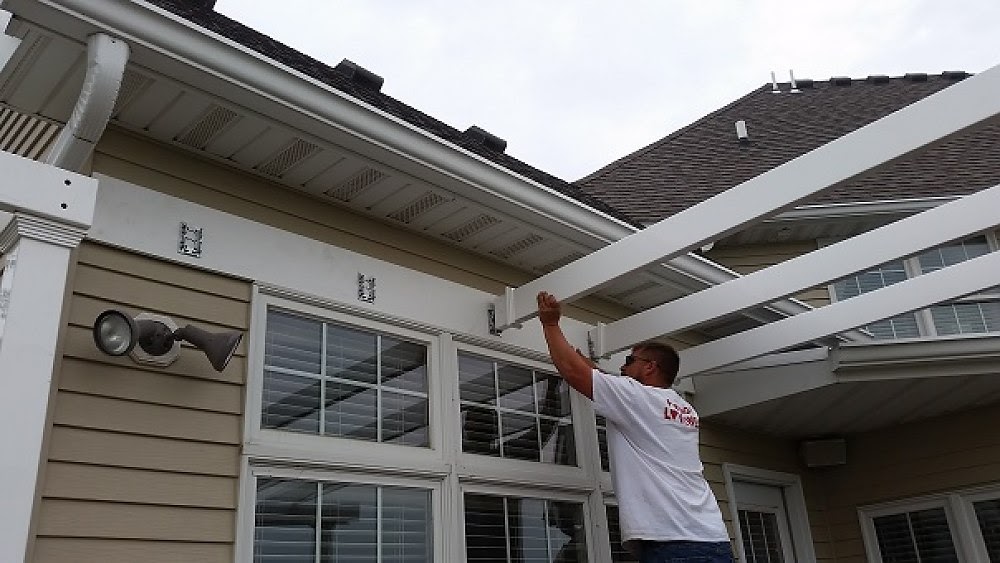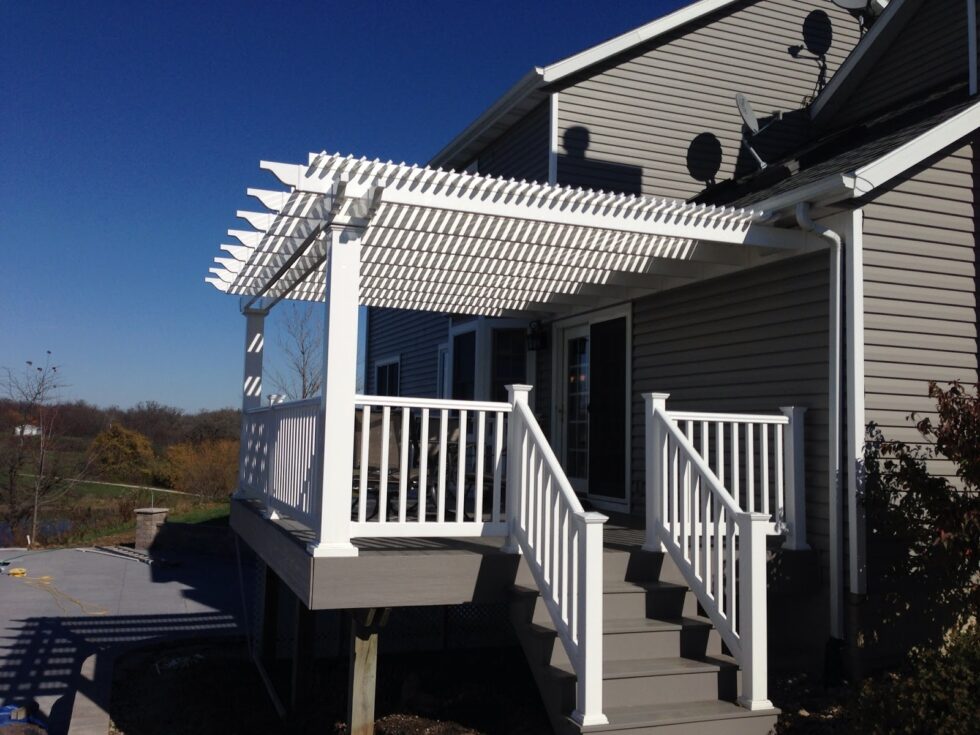
Adding a pergola to your home can dramatically increase the enjoyment of your outdoor space. It can also enhance your curb appeal and the function of the area. Pergolas add definition, shade and interest anywhere they're installed.
Installing the pergola on the front of your home requires several considerations that go beyond appearance and function. This includes following the right set of steps in the installation process to make sure it's done correctly.
Planning for Installation

Before you can get to the installation, there are a few things you need to do. For example, adding a pergola can be considered an extension of your home in some areas. For this reason, you may need to apply for a permit before your project begins.
You should also make sure that you take the time to find the right size for your structure. Attaching a pergola to your home requires the use of studs, which could be 16 to 24 inches apart. Therefore, you must choose your pergola kit wisely, accounting for size and dimension, to ensure that it's fastened properly and securely to your home.
Finally, make sure you've picked the perfect spot. For instance, your pergola may include things like railings, which will enhance the appearance of your deck or porch. If you already have a railing or don't want one on the front of your home, the additional railing will be completely unnecessary. Planning ahead of time will ensure the best results.
Installing the Pergola

Once you've planned, measured and ordered your pergola kit, the installation process can begin.
It's important to remember that not all pergolas are the same, nor are all of the surfaces you may be dealing with. As a result, not every step will apply to every installation. In addition, you may need to make modifications or changes based on your home. Keep that in mind.
With Heartland Pergolas, you not only get a beautiful pergola kit, but also access to detailed install instructions - it will be just like an expert is right there helping you.
Step 1
Begin by finding the pergola width and elevation on your house. You should also take the time to indicate the location of your studs and where you'll be positioning the beams and supports by using a simple pencil mark. This will essentially create a roadmap for the project, allowing you to seamlessly move through all of the steps without second-guessing your measurements.
Step 2
Install the aluminum post mount for your pergola. Whether you're attaching it to a deck, a slab of concrete or concrete footing, it is a relatively simple process. Make sure the post mount is firm and secure before moving onto the next step. This will create a sturdy and stable foundation for the pergola.
Step 3
Install the 5x5 post or 7" column over the post mount, depending on the pergola you purchased. First, determine the height you want for the aluminum pergola beam. Make sure it's completely level and clamp it in place, marking the spot with a pencil. Measure from the ground to the mark and keep that measurement handy. Then, cut the mount at the marking you just made. Do this on all four posts and make sure the tops of your posts are level.
At this point, the process may vary depending on the pergola you chose. The goal of this step is to install the vinyl sleeve, which will cleanly cover the aluminum. Be sure to closely follow the instructions that were included with your pergola (or online) in order to ensure that you're measuring, cutting and installing the correct way.
Step 4
If you have a free-standing kit, then you won't have to worry about this step. For everyone else, the goal of this step is to attach the pergola ledger to the structure you just installed.
Attach the trim board to the house. Ensure the trim is appropriately flashed and sealed, so you don't have to worry about water getting behind it when it rains. Once that's finished, install the rafter hanger mounts onto the trim board and the pergola beams.
Step 5
Install the beam to the posts you've already installed. This is going to require meticulous measurements, cutting holes in the beams and attaching brackets. It's best to do this step on the ground, with a helper, so that you can attach the beam without compromising your safety.
Step 6
Attach the rafters to the beam. The number of rafters you'll have to install depends on the size of your pergola. This is another step that requires thorough measurements and a little bit of math. You may want to have a calculator handy for this one. Once the rafters are installed, you're ready to move on!
Step 7
Attach the purlin holders to the rafters. No matter how many purlin holders you have to install, you're going to want to make sure they're perfectly straight and level.
Be sure to determine the direction you want your purlins to be facing to ensure maximum shade. You may need to flip them around or adjust their positioning to provide optimal shade.
Step 8
Once the purlin holders are installed, it's time to install the purlins. This process is much easier if you attach the purlin cap to the end of the purlin before you start. They serve as a guide for the purlins, helping you complete this step with ease. This is when you will really start to see your pergola come to life.
Step 9
Attach and install the end caps and finishing touches on the pergola. These details may seem small, but they add a ton of cleanliness and style to the finished pergola.
Easily Add a Pergola to the Front of Your Home

If you'd like to add some much-needed shade, definition and style to the front of your home, a pergola is a perfect choice. Whether you're a novice DIYer or a pro, the installation process is quick and straightforward, allowing you to enjoy your new pergola the same day you receive it.
Ready to get started? Contact the experts at Heartland Pergolas for help, guidance and pricing on a stylish, easy-to-install pergola today.


